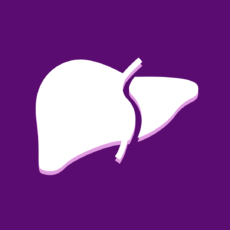Introduction
Your liver is an amazing organ. Not only does it perform hundreds of processes to keep you healthy, it’s also capable of repairing itself and creating new, healthy liver tissue.
Depending on the stage of your disease, you may be able to reverse fatty liver damage.
Of course, not all cases of steatotic liver disease (SLD) can be prevented, and some liver damage may not be able to be reversed.
How to reverse fatty liver damage
Left unmanaged, steatotic liver disease may get worse and lead to inflammation, scarring (fibrosis) and cirrhosis.
Currently, there is no specific medication or surgery to treat SLD. Management of SLD involves making lifestyle changes which will help you reduce your metabolic risk factors and improve the health of your liver.
Lifestyle changes aim to:
- stop the condition getting worse
- help your liver repair as much of the damage as possible and reverse SLD.
Exercise
Research has shown that exercise, even without weight loss can help reverse fatty liver damage. It doesn’t matter which type of exercise you do, as high-intensity and low-intensity exercise seem to be equally beneficial for liver health.1
Some research suggests that a combination of aerobic and resistance exercise work is best for people with MASLD (Metabolic dysfunction-Associated Liver Disease).2 However, this may not be possible for everyone.
The important thing is to make exercise a regular part of your week, so choose something you enjoy doing.
Most of the research indicates that between 150-240 minutes of moderate-intensity per week is ideal, but 135 minutes of moderate-intensity exercise is still beneficial.3 This equates to a 45-minute walk, three times a week. If it’s been a while since you’ve exercised, start small and build up gradually.
Read more about exercise recommendations for SLD.
Even if you have limited mobility you can still benefit from some types of exercise. The Safe Exercise at Home website, developed by the Australian Physiotherapy Association provides advice on safe exercise for older people.
If you have other health conditions that make it hard for you to do physical activity, the Exercise Right website has a range of resources to help. You can search for exercises suitable for specific health conditions and look for an accredited exercise professional who can give you individual advice.
Action:
Start incorporating regular movement into your week, even if you start with a 10-minute walk around the block.
If you need help getting started talk to your doctor or an accredited exercise professional.
Diet
What you eat can help reverse fatty liver in the early stages. In particular, improving your microbiome (the bacteria in your gut, or gut flora) is very beneficial for liver health.4 You can do this by:
- eating a wide range of fruits and vegetables
- taking a probiotic (available from your pharmacy)
- avoiding artificial sweeteners, as these destroy good gut flora.5
Probiotics have also been shown to improve insulin sensitivity, which will also help improve other problems with metabolism.6
Other dietary recommendations to reverse steatotic liver disease include:
- drink coffee (including decaffeinated varieties) – the more the better
- include olive oil in your diet
- eat lots of fruits and vegetables
- include foods high in fibre – the more you have the better your liver
- limit alcohol to no more than five standard drinks per week
- avoid foods and drinks with high or added sugar
- avoid snacking, but if you must snack, choose fruit, nuts or even dark chocolate
- avoid eating after dinner.7
Research also shows that missing meals (for example, skipping breakfast or lunch) can help your liver.8 However, discuss this with your doctor first.
It’s important to note that the effects of exercise and diet together are much greater than the effect of just focusing on exercise or diet alone.9
Action:
Try to eat three or four different coloured vegetables at your evening meals.
Swap your mid-morning biscuit or cake with a piece of fruit or handful of nuts.
Make olive oil your choice of cooking oil
Talk to a dietitian if you need help, or you have other health conditions or dietary needs.
Weight loss
While weight loss is recommended to improve general health, you don’t have to lose a lot to improve the health of your liver. Losing just 5% of your body weight can improve your liver health.10 If you lose 10% of your body weight you can reduce liver fat, resolve inflammation and may improve any scarring on your liver.11
We know that losing weight can be hard. But, changing your diet and increasing exercise levels can improve the health of your liver, even if you don’t lose weight.
Other general recommendations are to:
- manage your metabolic risk factors such as blood pressure, cholesterol and blood glucose levels
- avoid medicines that may impact your liver (your doctor can advise you)
- quit smoking.
It’s important to note that if you are already at a recommended weight or are potentially underweight, focusing on weight loss might not be necessary and could even be counterproductive. Always consult with your healthcare provider before making any significant changes to your diet or exercise routine.
Immunisation against hepatitis
Hepatitis A and hepatitis B are viruses that can affect the health of your liver. We recommend vaccination against both these viruses, especially if you have advanced steatotic liver disease. Ask your doctor for more information.
Medication for SLD
Currently in Australia, there is no medication to manage or treat SLD.
However, in March 2024 the US Food and Drug Administration approved the drug Rezdiffra (resmetirom) for use in adults with Metabolic dysfunction-Associated Steatohepatitis (MASH) with moderate to advanced liver scarring (fibrosis) to be used alongside diet and exercise measures.12
Rezdiffra is not approved for use in Australia yet and is unlikely to be available before 2027.
Research is ongoing into other drug therapies to treat SLD.














